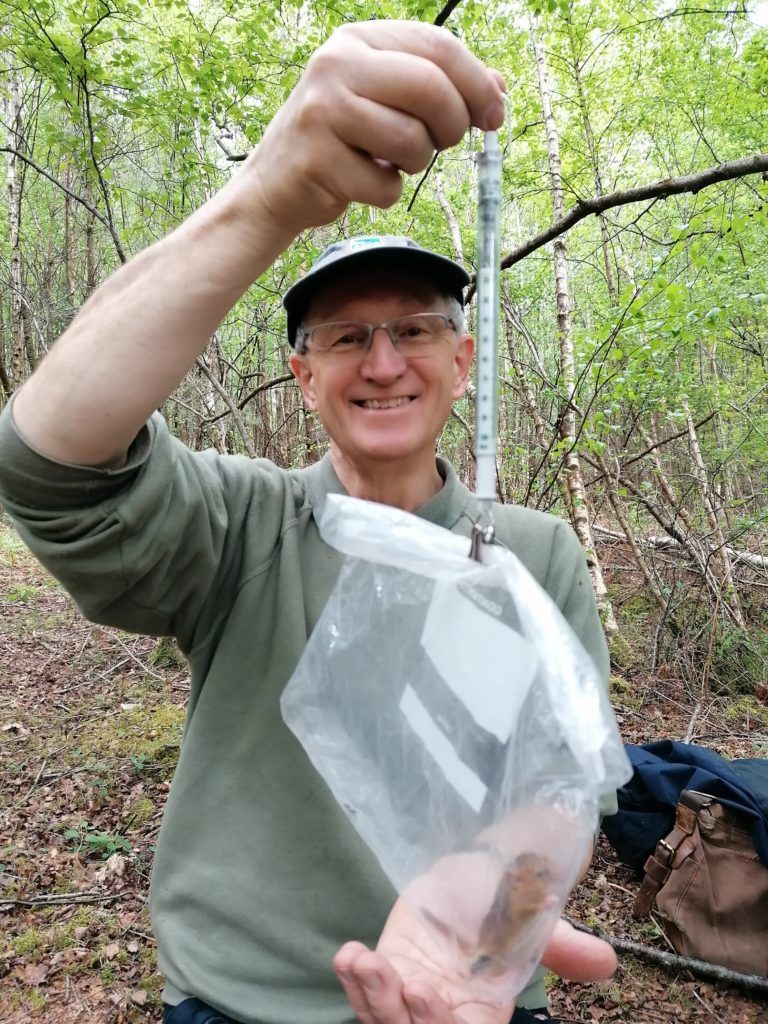Meet Alan Loweth: dormouse monitor
In this series, we chat to the dedicated staff members, conservation partners and volunteers at PTES. We find out why each of them chose a career in wildlife conservation, what they find rewarding about their work and what they love most about what they do.
Alan Loweth
Dormouse monitor at RSPB Broadwater Warren Nature Reserve in Kent
Tell us about yourself and the site you monitor
I’m an RSPB volunteer at the Wealden Office near Tunbridge Wells where I have a number of roles including Office Manager, Volunteer Co-ordinator and species surveyor. Broadwater Warren was acquired by the RSPB in 2007 as a lowland heath and woodland restoration project.
How long have you been monitoring for?
I’ve been monitoring dormice at Broadwater Warren since the monitoring programme first began there in 2010. I helped put up all 178 nest boxes and trained for my licence at the reserve and also at a private woodland. I received my licence in January 2013.
What’s the most memorable day you’ve had looking for dormice?
We applied for external funding for a project on the reserve and invited a senior member of the trust concerned to visit and join us on a nest box check. A large male dormouse gave me the most serious bite I’ve ever had which produced a fair amount of blood. The guest seemed very impressed by this incident, the funding application was successful, RSPB’s gratitude was extended to the dormouse and I felt that my suffering was rewarded.

Describe your woodland and why it’s special to you
I’ve been volunteering at Broadwater Warren since it was acquired by the RSPB. I’ve been lucky enough to see first hand the amazing transformation from a dark commercial conifer plantation to a nature reserve which is partly lowland heath – now home to woodlark, Dartford warbler and nightjar – and mixed woodland which is actively managed for wildlife. It’s involved a lot of hard work and there’s plenty more to do, but all the staff and volunteers are proud of what we’ve achieved so far.
What are the challenges at the site?
The dormouse population was fragmented and survived in pockets of woodland when the conifer plantation was actively worked. Our aim is to improve the habitat where dormice are present and, through woodland management, to link up the isolated populations across the reserve. Our efforts are currently being hindered by a noticeable increase in deer grazing which is preventing regeneration in the areas of woodland that are being coppiced for the benefit of a range of species including dormice.
Tell us something about you we wouldn’t expect from a dormouse monitor?
I worked for 34 years in the Diplomatic Service serving overseas in Denmark, the Soviet Union and Poland. During my career I learnt Danish, Russian and Polish, although they are pretty rusty now.
Can you help us reintroduce more dormice to the wild?
Lead image by Hugh Clark. Profile photo by Alan Loweth.


